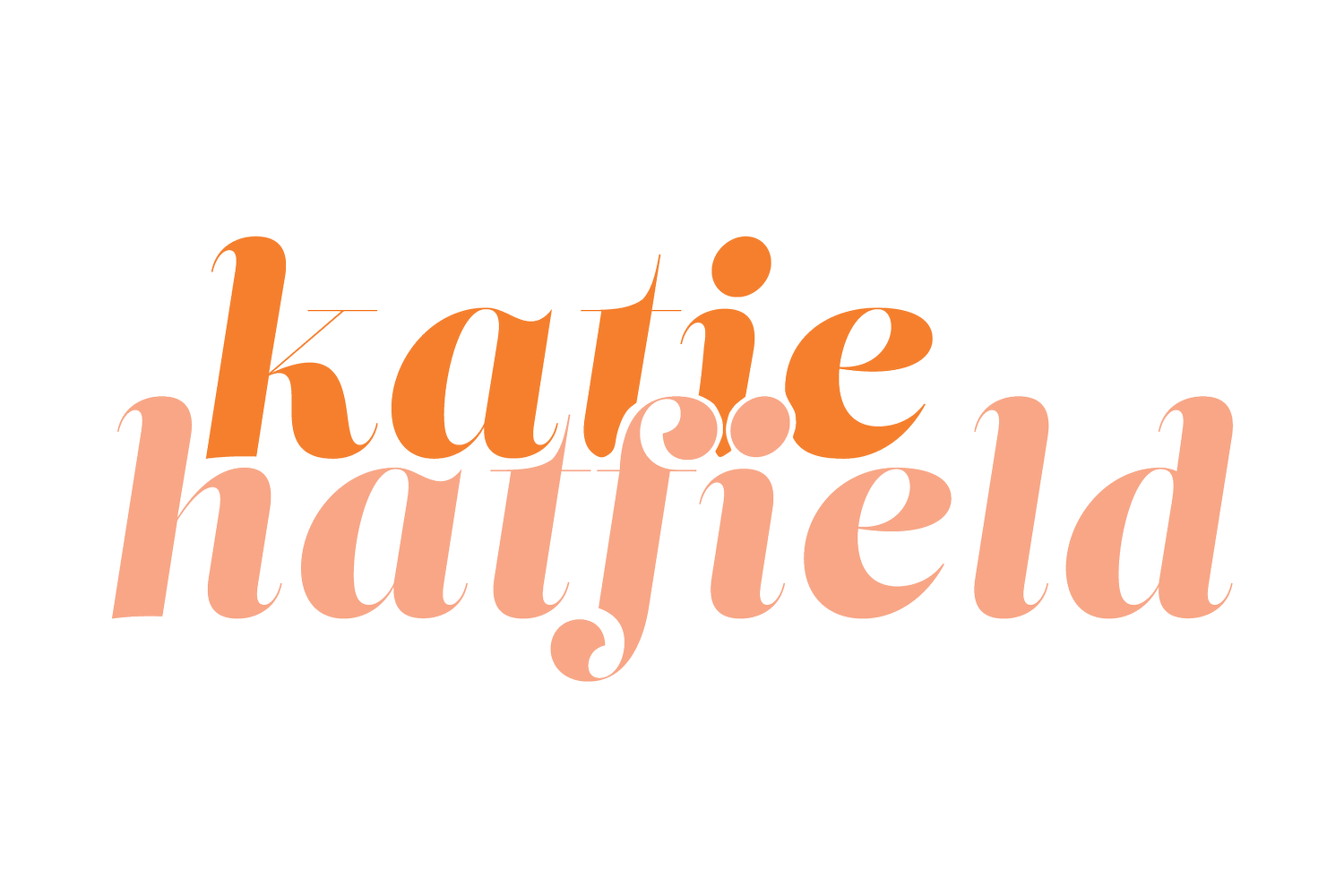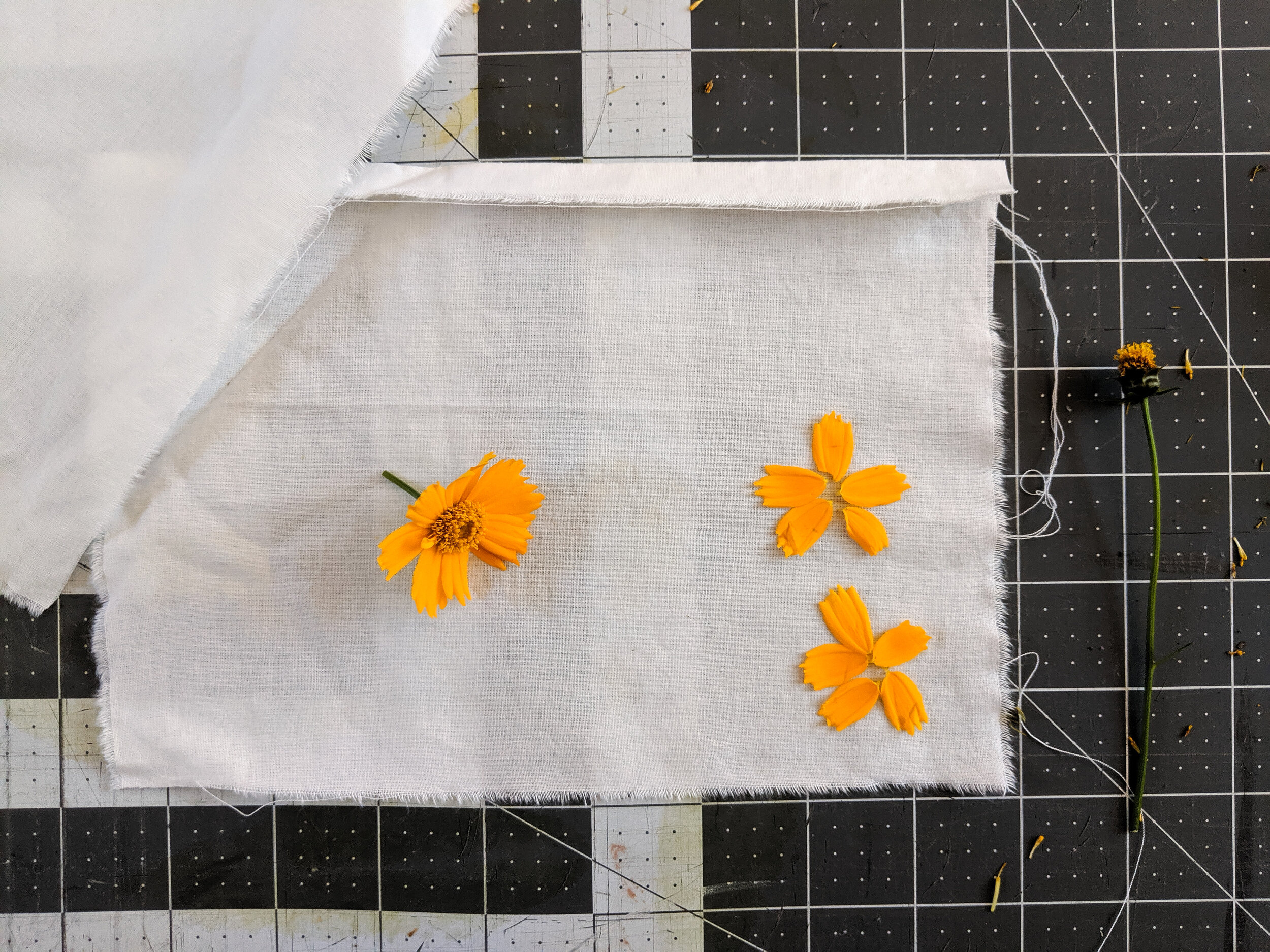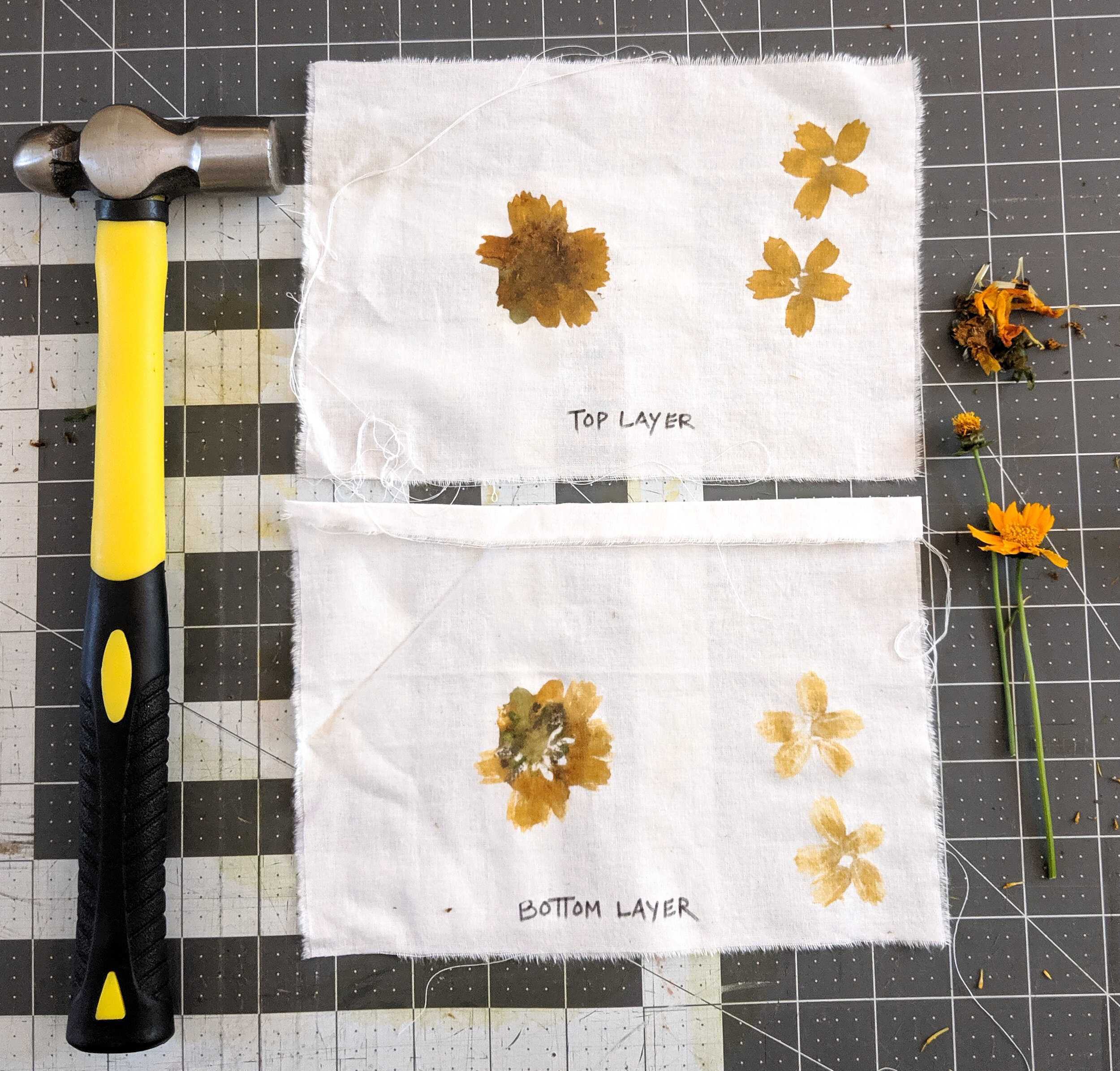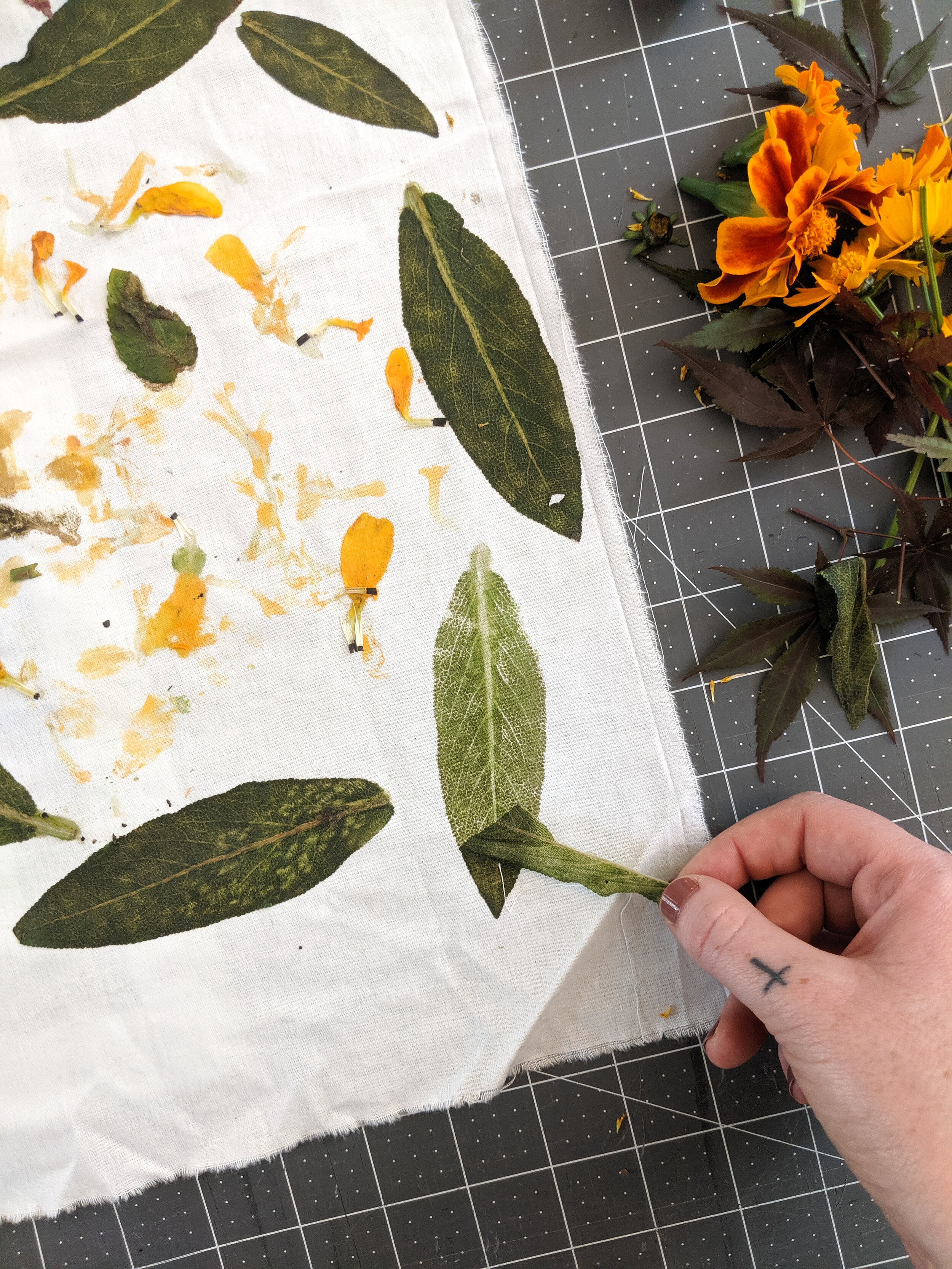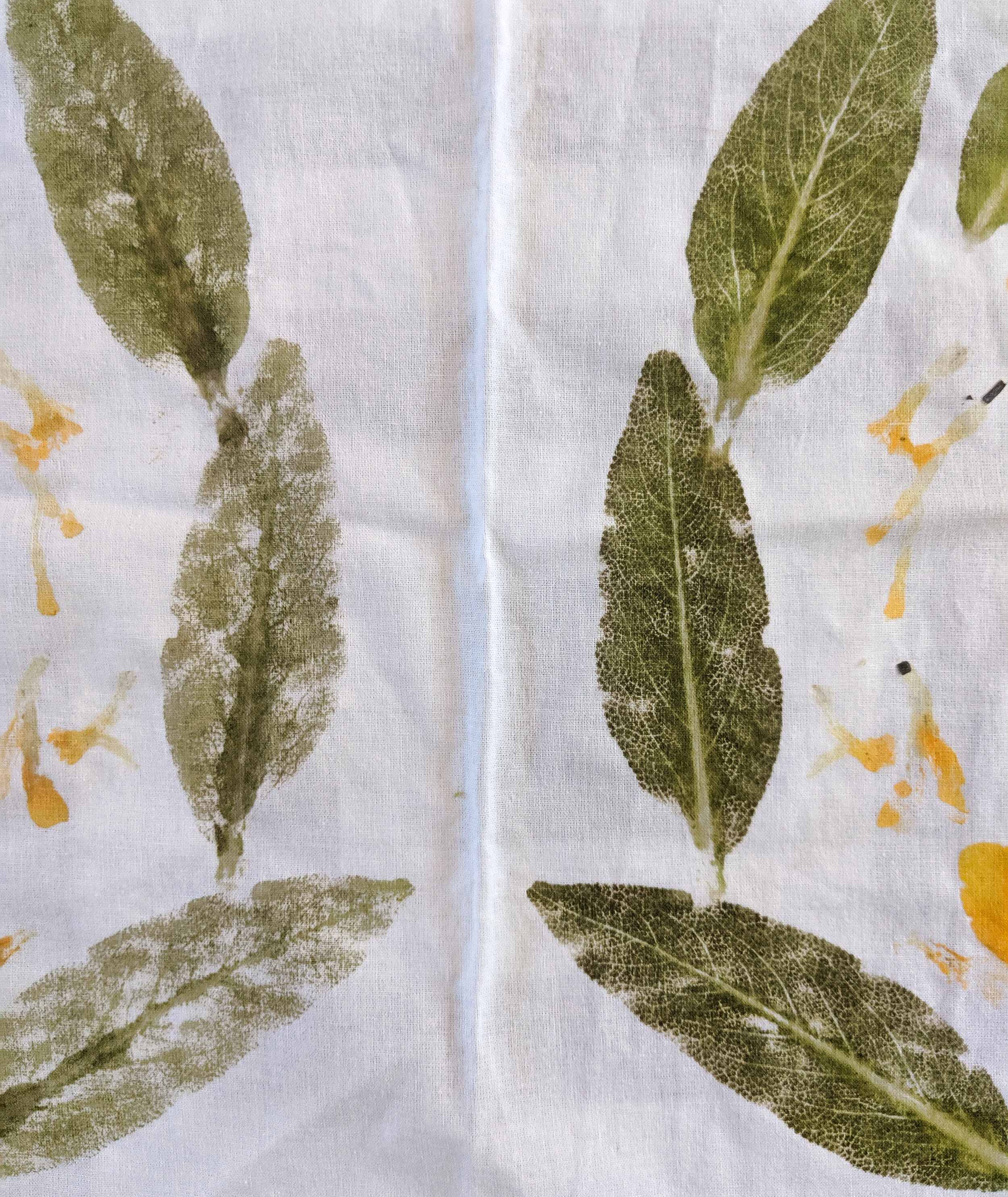HOW TO MAKE TATAKI ZOME PRINTED FABRIC
Tataki zome fabric! You can try this method of natural dyeing on all kinds of natural fabric and clothing! Here I’ve printed on both indigo dyed fabric napkins and undyed fabric.
While cooking color into cloth is magical, hammering color into cloth is even more stupendous and just plain fun! It is the easiest and most accessible way to get pattern and color onto fiber.
I first came to know this natural dye method as “hapa-zome” from India Flint, loosely translating to “leaf-dyeing” in Japanese. I later learned that its original Japanese name is “tataki zome” (“hammering” + “dyeing”).
You too can get your hands on this hammering fun! Here are my tips and tricks for making your own tataki zome cloth.
What You’ll Need:
Natural cloth, preferably mordanted [check out my notes on mordanting fabric here (in Tip #2)]
Hammer (hammers with a smaller head are great for this!)
Wooden block or another hard, protective surface to hammer on. I’m using a self-healing cutting mat on a wooden table.
Fresh flowers and foliage
Make a Flower Sandwich
Take your cloth and cut or fold it in half. We’re gonna make a flower sandwich with the flowers and foliage spread in between two layers of cloth. Don’t hesitate to get pictorial with it! Create fun and whimsical designs with your foliage.
Since I’m going to fold a large piece of fabric in half, I only cover half of my fabric with my flower arrangement.
Folded over. Sandwich complete!
Fresh flowers and foliage that have soft leaves and petals work the best. I like to use marigolds, coreopsis, sage, and Japanese maple leaves from my garden to hammer into cloth. Other ferns, flowers and soft grasses can be used as well!
Hammer Time!
Once your sandwich is made, it’s hammer time! This takes some practice and finess to get right. You want your hammering to be firm enough to get the color out of the foliage but not too firm that you crush your foliage into mush and splatter color everywhere. Take your time. Hammer in small, succinct circles on the flowers and leaves. Gentler taps will help you get fine vein detail.
Every day I’m hammerin’…
Hot Tip: Sometimes flower heads are a bit bulky and hard to hammer without really crushing. In this case, I’ll remove the petals and arrange them how I like without the flower’s center.
Let’s see how full flower heads differ from picked petal arrangements.
Both different yet both beautiful.
Color and detail can differ from the top layer (the layer that you hammer) and the bottom layer of fabric. Do some tests and see which layer you prefer!
Hammer your flower sandwich until you’ve extracted your desired color and detail from the foliage. Open up your sandwich, peel the flattened foliage off of your fabric and admire your work!
The reveeeeal!
Peel all that extra foliage off!
I love seeing the differences between the top and bottom layers of my fabric sandwich. This shows me how the underside of my sage leaves (on the right) produce so much more detail than the tops (on the left).
Mish-mash of petals from my coreopsis, marigolds and mint leaves.
I like to let mine dry and then I hand wash the fabric with cold water to get any remaining foliage bits out of the fabric. Steam ironing the fabric will help to further set the color into the fiber. You should be able to add this fabric to your laundry if desired, but know that some flower and foliage color may fade quickly. This is why I recommend using mordanted fabric and flowers that I know have wash-fast color characteristics! Eventually most of the color will fade, but that just means you can add more color and pattern!
If you’re diving into the natural dye world and want a comprehensive list of other flowers and foliage that make good natural dyes, check our Jenny Dean’s book “Wild Color: How to Grow, Prepare and Use Natural Plant Dyes.” It’s one of my favorites. You can find more of my go-to natural dye books here (bottom of the post)!
Happy hammering!
-KB
